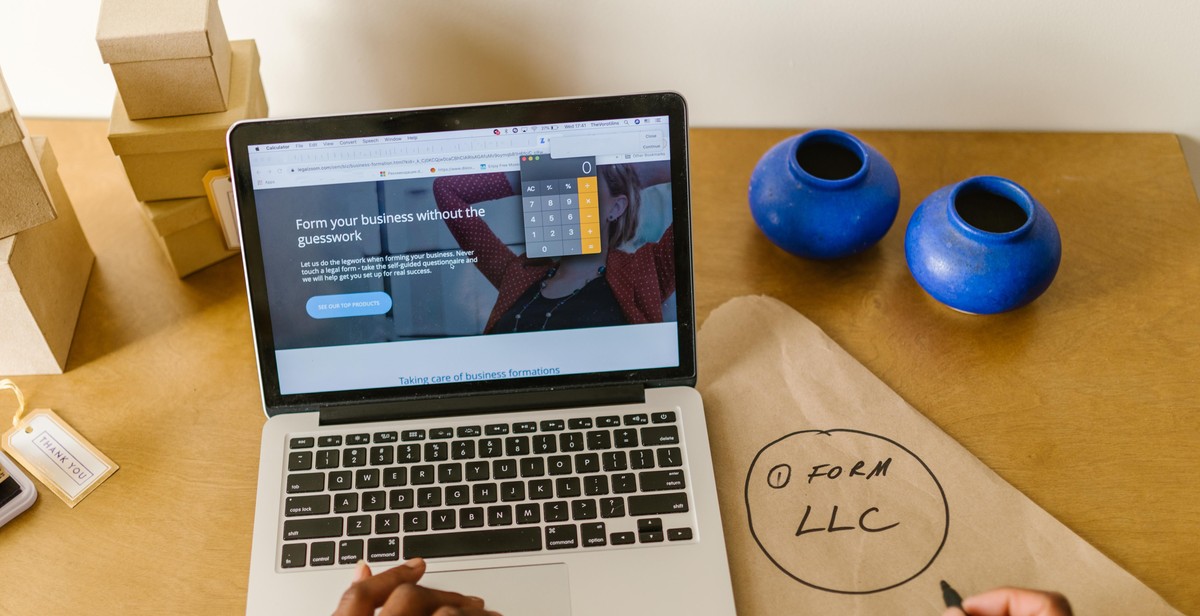Introduction: How to Create a Frugal Lifestyle and Save Money in Everyday Life
Living frugally doesn’t necessarily mean depriving yourself of the things you love or need. It means finding ways to save money on everyday expenses while still enjoying life to the fullest. By creating a frugal lifestyle, you can reduce your expenses, increase your savings, and achieve financial freedom.
In this article, we will explore practical tips and strategies to help you create a frugal lifestyle and save money in your everyday life. Whether you’re looking to pay off debt, save for a down payment on a house, or simply want to live a more financially sustainable life, these tips will help you achieve your goals.
The Benefits of a Frugal Lifestyle
Living a frugal lifestyle has numerous benefits beyond just saving money. Frugality can help you:
- Reduce financial stress and anxiety
- Live within your means
- Achieve financial goals faster
- Reduce waste and live a more sustainable life
- Appreciate the value of money and the things you have
With these benefits in mind, let’s explore how you can create a frugal lifestyle and save money in your everyday life.
Understanding Frugal Living
Frugal living is a lifestyle that focuses on spending less money on unnecessary expenses and maximizing the value of every dollar spent. It does not mean living a life of deprivation or sacrificing quality of life, but rather being intentional with spending habits to achieve financial freedom.
What is Frugal Living?
Frugal living involves making conscious decisions to reduce expenses and save money. This can be achieved in several ways, including:
- Creating a budget and sticking to it
- Avoiding impulse purchases
- Opting for generic brands over name brands
- Using coupons and discounts
- Reducing energy consumption
- Cooking at home instead of eating out
- Buying used items instead of new ones
Frugal living is not about being cheap or stingy, but rather about being mindful of spending and finding ways to live within one’s means. It is a lifestyle that promotes financial responsibility and independence.
The Benefits of Frugal Living
Frugal living has numerous benefits, including:
- Reducing debt
- Increasing savings
- Improving financial stability
- Reducing financial stress
- Increasing self-discipline
- Encouraging creativity and resourcefulness
By adopting a frugal lifestyle, individuals can achieve their financial goals and live a more fulfilling life. It enables them to prioritize their spending and focus on the things that truly matter to them, such as experiences and relationships.

Creating a Frugal Budget
Creating a frugal budget is essential to saving money and achieving financial goals. It involves assessing your expenses, setting financial goals, and creating a realistic budget that aligns with your income and lifestyle.
Assessing Your Expenses
The first step in creating a frugal budget is assessing your expenses. This involves tracking your spending for a few weeks or months to determine where your money is going. You can use a spreadsheet or budgeting app to categorize your expenses into fixed and variable costs, such as rent/mortgage, utilities, groceries, dining out, entertainment, and transportation.
Once you have a clear understanding of your expenses, you can identify areas where you can cut back and save money. For example, you may find that you are spending too much on dining out or entertainment and can reduce those expenses by cooking at home or finding free activities.
Setting Financial Goals
Setting financial goals is crucial to creating a frugal budget. It gives you a clear purpose and motivation for saving money. Your financial goals may include paying off debt, building an emergency fund, saving for a down payment on a house, or investing for retirement.
When setting financial goals, make sure they are specific, measurable, achievable, relevant, and time-bound (SMART). This will help you stay focused and track your progress.
Creating a Realistic Budget
Once you have assessed your expenses and set financial goals, you can create a realistic budget that aligns with your income and lifestyle. Your budget should prioritize your essential expenses, such as housing, utilities, and groceries, and allocate a portion of your income towards your financial goals.
You may need to make some sacrifices and cut back on non-essential expenses to achieve your financial goals. However, it’s essential to strike a balance between saving money and enjoying your life. You can use a budgeting app or spreadsheet to track your expenses and adjust your budget as needed.
| Benefits of a Frugal Budget |
|---|
| Helps you save money |
| Reduces stress and anxiety |
| Helps you achieve financial goals |
| Encourages mindful spending |
A frugal budget can help you save money, reduce stress and anxiety, and achieve your financial goals. By assessing your expenses, setting financial goals, and creating a realistic budget, you can take control of your finances and live a more fulfilling life.

Frugal Shopping Habits
Creating a frugal lifestyle starts with your shopping habits. Here are some ways to save money on groceries and other purchases:
Making a Grocery List
Before heading to the store, make a grocery list of the items you need. Stick to the list to avoid impulse purchases that can add up quickly. Don’t forget to check your pantry and fridge to see what you already have on hand.
Meal Planning
Meal planning can help you save money by reducing food waste and preventing last-minute takeout orders. Plan your meals for the week based on what’s on sale at your local grocery store and what you already have in your kitchen.
Using Coupons and Discounts
Take advantage of coupons and discounts to save money on your purchases. Check your local newspaper, online coupon sites, and store apps for deals. Many stores offer loyalty programs that provide discounts and rewards for frequent shoppers.
Buying Secondhand
Buying secondhand can save you money on clothing, furniture, and other household items. Check out thrift stores, consignment shops, and online marketplaces for deals. You can also sell your own gently used items to make some extra cash.
| Frugal Shopping Habits | Savings |
|---|---|
| Making a Grocery List | Reduces impulse purchases |
| Meal Planning | Reduces food waste and prevents last-minute takeout orders |
| Using Coupons and Discounts | Provides discounts and rewards for frequent shoppers |
| Buying Secondhand | Saves money on clothing, furniture, and household items |

Reducing Everyday Expenses
Creating a frugal lifestyle is all about finding ways to cut costs without sacrificing too much. Here are some tips on reducing everyday expenses:
Cutting Utility Costs
One of the easiest ways to reduce utility costs is to turn off lights and unplug electronics when they’re not in use. You can also install energy-efficient light bulbs and adjust your thermostat to save on heating and cooling costs. Consider using a programmable thermostat to automatically adjust the temperature when you’re not home.
Lowering Transportation Costs
Transportation costs can add up quickly, but there are ways to save. Consider carpooling or taking public transportation instead of driving alone. If you do need a car, choose a fuel-efficient vehicle and keep up with regular maintenance to ensure it’s running efficiently. You can also save on gas by combining errands and planning your trips in advance.
Reducing Entertainment Expenses
Entertainment can be a big expense, but it’s possible to enjoy yourself without breaking the bank. Look for free or low-cost activities in your community, such as parks, libraries, and museums. You can also save on movie tickets by going to matinees or using discount codes. Consider cutting back on subscriptions and memberships that you don’t use often.
| Expense Type | Savings Tip |
|---|---|
| Utility Costs | Turn off lights and unplug electronics when not in use |
| Transportation Costs | Carpool or take public transportation |
| Entertainment Expenses | Look for free or low-cost activities in your community |
By implementing these tips, you can start creating a frugal lifestyle and saving money in everyday life. Remember to track your expenses and adjust your budget as needed to stay on track.

Building a Frugal Mindset
Creating a frugal lifestyle requires a change in mindset. It’s not just about cutting expenses; it’s about adopting a new way of thinking about money. Here are some ways to build a frugal mindset:
Avoiding Impulse Purchases
One of the biggest obstacles to creating a frugal lifestyle is impulse purchases. These are purchases made on a whim, without much thought or consideration. To avoid impulse purchases, make a list before you go shopping and stick to it. Don’t buy anything that’s not on the list, no matter how tempting it may be. You can also try waiting 24 hours before making a purchase to see if you really need it.
Learning to Say No
Saying no is a powerful tool in creating a frugal lifestyle. You don’t have to say yes to every invitation or opportunity that comes your way. Learn to prioritize what’s important to you and say no to things that don’t align with your values or goals. This can include saying no to expensive outings with friends or saying no to buying the latest gadget just because everyone else has it.
Finding Joy in Simplicity
Frugal living isn’t just about cutting expenses; it’s also about finding joy in simplicity. Simplify your life by decluttering your home and getting rid of things you don’t need. Focus on experiences rather than material possessions. Spend time with loved ones, take walks in nature, and enjoy the simple things in life. You’ll find that living frugally can be incredibly fulfilling.
Conclusion
In conclusion, creating a frugal lifestyle and saving money in everyday life is not rocket science. It requires a change in mindset, habits, and behavior. By following the tips outlined in this article, you can make significant progress towards achieving your financial goals.
Remember the Importance of Budgeting
Creating and sticking to a budget is key to achieving a frugal lifestyle. It enables you to track your income and expenses, identify areas where you can cut back, and save more money. Use tools like spreadsheets, budgeting apps, and financial software to help you stay on track.
Embrace a Minimalist Lifestyle
A minimalist lifestyle is about living with less stuff and focusing on what truly matters. By adopting this lifestyle, you can reduce clutter, save money, and feel more content with what you have. Consider decluttering your home, buying used items, and avoiding impulse purchases.
Be Mindful of Your Spending Habits
It’s easy to fall into the trap of spending more than you need to on things like food, entertainment, and transportation. By being mindful of your spending habits, you can identify areas where you can cut back and save money. Plan your meals, look for free or low-cost activities, and consider alternatives to driving.
Start Small and Stay Consistent
Creating a frugal lifestyle and saving money is a journey that takes time and effort. Start small by making small changes to your habits and gradually work your way up. Stay consistent and keep track of your progress to stay motivated.
Remember, the key to creating a frugal lifestyle and saving money is to be intentional about your choices. By making conscious decisions about how you spend your money, you can achieve your financial goals and live a more fulfilling life.
